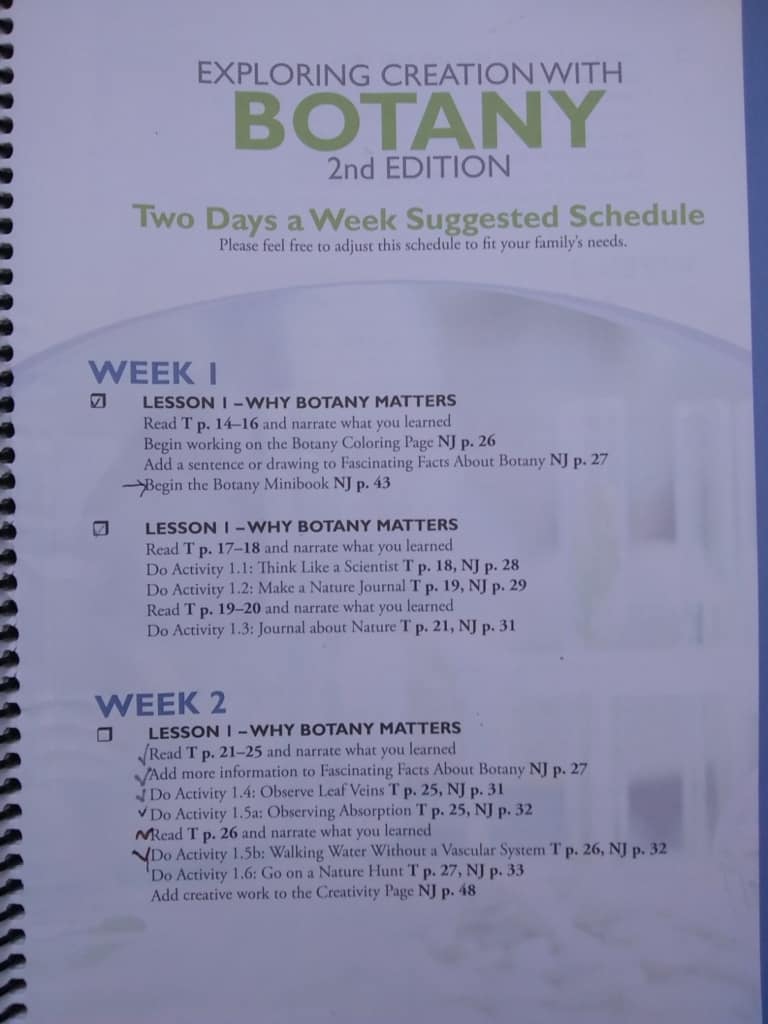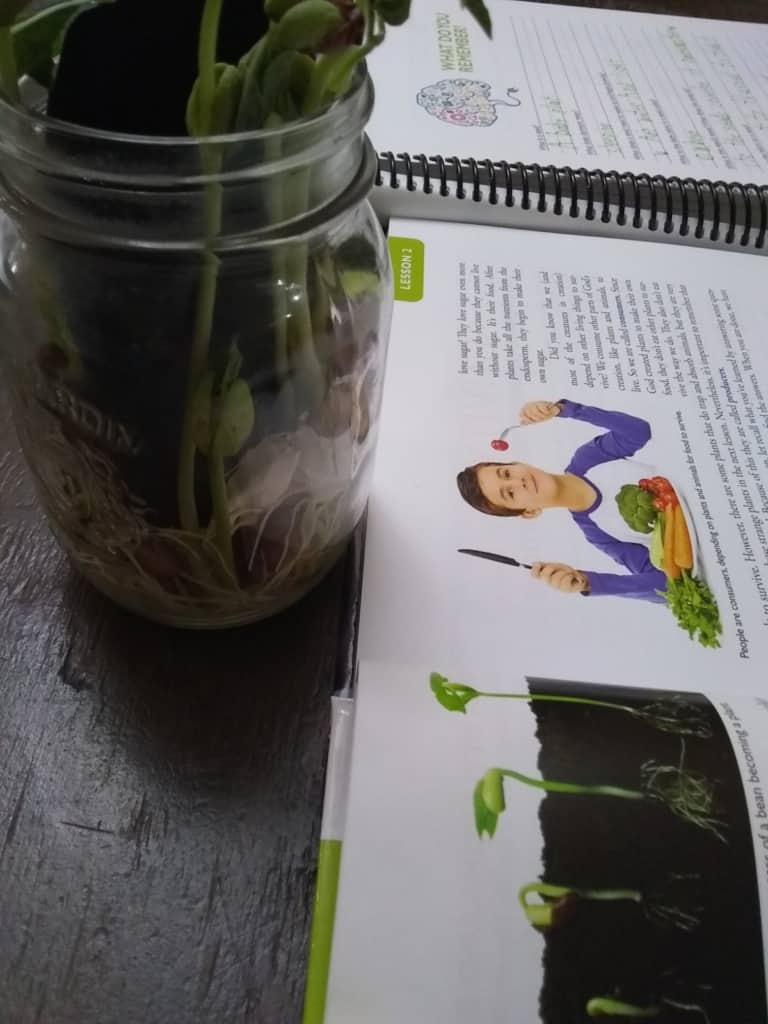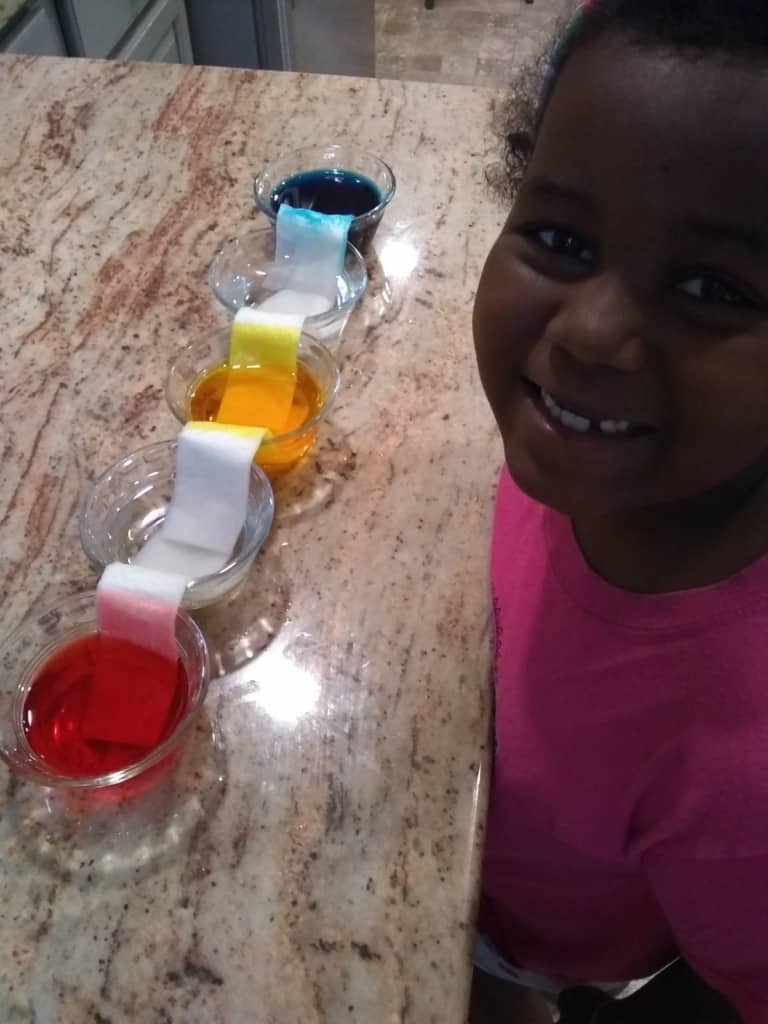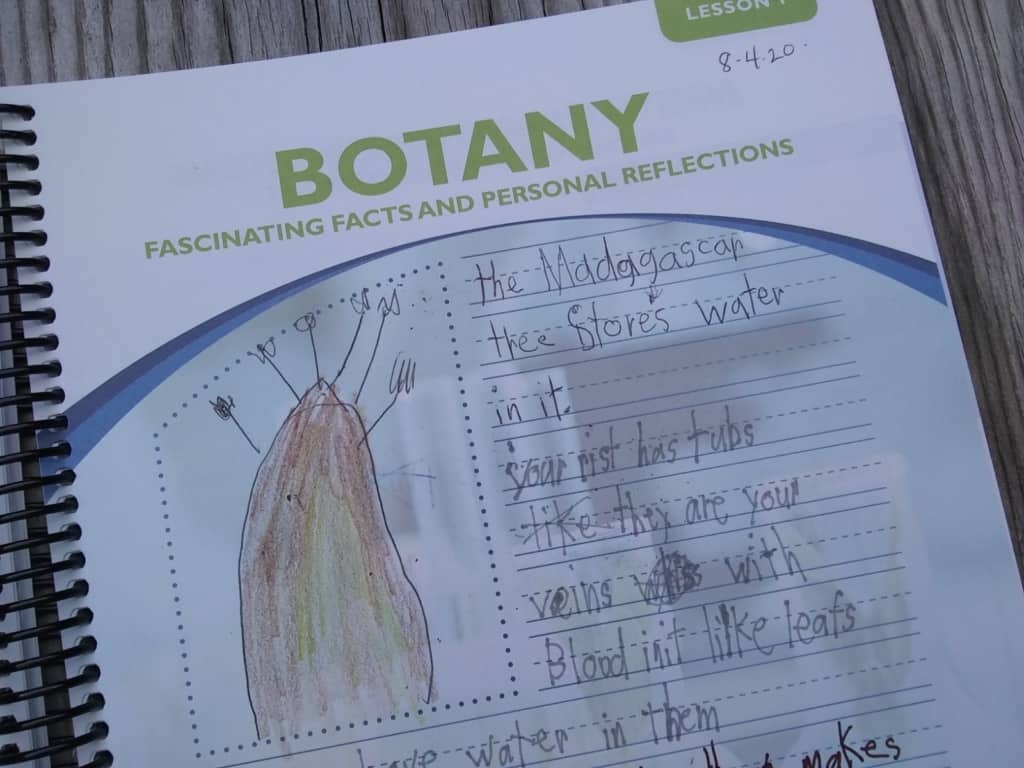If you’re looking for a homeschool science curriculum written from a Christian worldview perspective, then our top pick is Apologia. Their newest release is the 2nd edition of Exploring Creation with Botany. Here’s an inside peek into our experience using this curriculum and our complete Apologia Botany review.
Disclaimer: I received a copy of this product in exchange for my honest review. I was not required to write a positive review, nor was I compensated in any other way. All opinions I have expressed are my own or those of my family. I am disclosing this in accordance with the FTC Regulations.

Apologia Botany Curriculum
The new 2nd edition Exploring Creation with Botany by Jeannie Fulbright takes a beautiful hands-on and delight-driven approach to learning science. You will appreciate this curriculum if you’re looking for:
- an open & go style
- easy on mom
- an elementary curriculum to use with multiple ages
- notebooking
- Charlotte Mason approach
- hands-on
- narrative-style “textbook”
- “textbook” that reads more like a living book
- Christian worldview

Since I wanted to try this out with my second and seventh graders, Apologia sent out family the Exploring Creation with Botany hardcover textbook, and two spiral-bound notebooking journals – one for my second grader and one for my seventh grader.
Let me tell you more about these resources.
The textbook is in full color and is written is an enjoyable narrative style right to the student. It doesn’t feel dry and boring like your typical science textbook.

It includes fourteen lessons, which will take about twenty-eight weeks to work through.
The textbook includes many colorful illustrations, easy-to-follow science activities, and “What Do You Remember?” sections with questions to guide your discussions or narrations with your kids.
The fourteen lesson topics in this Botany course include:
- Why Botany Matters?
- Seeds
- Angiosperms
- Pollination
- Fruit
- Leaves
- Roots
- Stems
- Gardening
- Trees
- Gymnosperms
- Seedless Vascular Plants
- Nonvascular Plants
- Mycology

In addition to the textbook, you’ll want to also purchase a student notebook to flesh out the assignments while providing an enjoyable way of documenting what your kids are learning.
How Notebooking Works
The student notebooks are a fabulous way to help your children write down and sketch what they’re learning. Instead of using busy work pages, these pages provide a way to keep a scrapbook of their science education.
There are two options for the student notebooking journals:
- Regular Notebooking Journal (recommended for grades 3-6)
- Junior Notebooking Journal (recommended for younger elementary students)
The main difference in the two are the writing lines. The Junior Notebooking Journal includes more structured handwriting lines with the dashed middle line. Other than this, the assignments in the notebooking journals are identical, and you could use them interchangeably with multiple aged-kids. So, it mainly comes down to their handwriting ability and whether or not you need some extra structure there.

The Apologia curriculum uses notebooking as the way to engage your kids with active learning. I find that this way of recording the most important or exciting discoveries of the day is much more palatable to my kids rather than asking them to fill out mindless science worksheets.

The student notebooks also include the suggested weekly schedule for completing the curriculum. It clearly spells out which pages to read in the textbook and then which pages to complete in the notebook.

How We Used It
The student notebook includes a two days a week suggested schedule. However, once we started using this curriculum, my second grader wanted to do it everyday!
Of course, after a week or two, she has lost some steam, and we’re back to a couple days a week, but she still insists that Botany is her favorite subject.

I’m not surprised at all, as this curriculum is enjoyable for the student and parent!
The activities include items you can easily find, and it’s this hands-on approach to botany that has opened my daughter’s eyes as she takes in the natural world in her own back yard.

The only things we tend to skip are the coloring pages. If your child loves to color, then you’ll be happy to know these pages are included!

Sometimes we also break down the weekly assignments to span four days instead of two. It’s such a flexible curriculum that you can easily make it fit your homeschool schedule and style.
My seventh grader is technically one year above the recommended age level of this curriculum. However, Apologia graciously provided a regular student notebook for him to use and give Botany a try.

Since we’ve also used Apologia’s Exploring Creation with General Science, I can tell the difference. Yes, Botany is definitely on an elementary level. However, if you’re wanting to use it for multiple kids together, I think you could make the stretch into 7th grade. He moves at a faster pace and I expect more detail and cohesiveness for his narration and other assignments. And my older student of course skips the coloring pages 🙂
Highlights of Apologia Botany
The main highlight of this curriculum is the way it incorporates multiple hands-on activities for each lesson. Instead of just reading about science, your children will be able to observe and experience it.
One of the first activities in the course was illustrating the way water moves in non-vacuous plants. This was the walking water experiment. My daughter loved it!


Another great activity when learning about the parts of the flower was the flower dissection.

Children are encouraged to narrate (tell back) what they’ve learned after reading each section. There are also pages where they can write and draw what they’ve just learned.

Exploring Creation with Botany encourages an ongoing nature journal habit where your child will walk around the yard and sketch and write about what they observe.
If you already consider yourself a Charlotte Mason homeschooler, then Apologia’s Botany curriculum will feel very natural to you. But even if you’re not a Charlotte Mason purist (I’m not!), it will still be a beautiful and gentle and enjoyable approach to science.
One last strength of this curriculum that I’ll mention is that Jeannie Fulbright uses actual science terminology with your elementary kids. She doesn’t water down the science, but she explains it in such an approachable way, that even kids who don’t normally love science will begin to love science.
This is one reason that I knew this curriculum, while written for elementary kids, would still have enough depth for my seventh grader, at least for the first semester. Instead of stretching this out over a whole year, my seventh grader will finish it in half a year and then move on to another book and topic.
We loved getting to use this new curriculum and talk about our experience in this Apologia Botany Review.
Recommendations
If you’re looking for a relaxed approach to science that doesn’t squash your child’s natural curiosity, then you won’t be disappointed with Apologia.
Teaching multiple ages together? Apologia Botany is perfect for this!
If you’re looking for a curriculum that is specifically created for the way homeschool families work, then this is it. Curriculum that is made for a traditional school setting usually doesn’t jive well with the homeschool mindset or practice.
I especially love that this curriculum doesn’t require any special teacher’s guides or manuals, no confusing instructions either. Just open and go. Complete the very next lesson on the next day that you do science. It will be as relaxed as you are!
Related Posts
You can purchase the Apologia Botany curriculum for elementary students at Apologia.com
If you’re interested in our experience with other Apologia curriculum, then check out these related posts:
